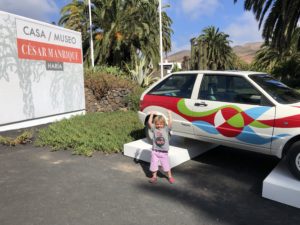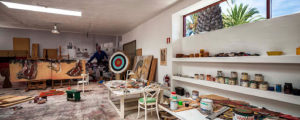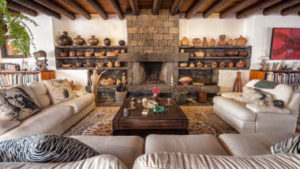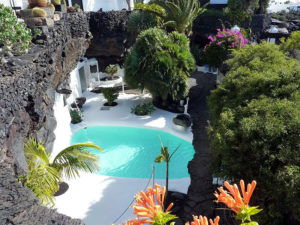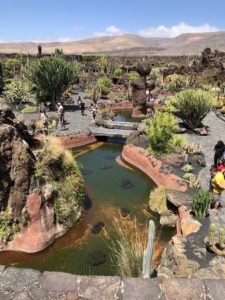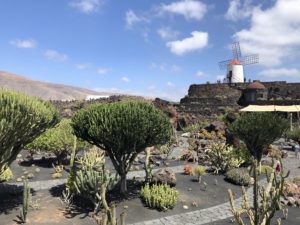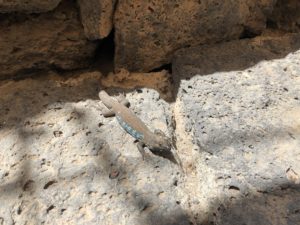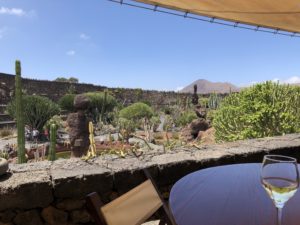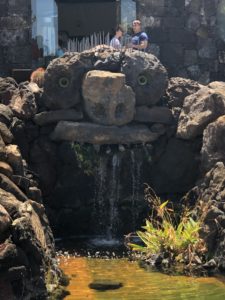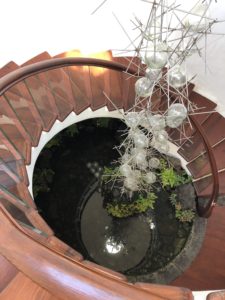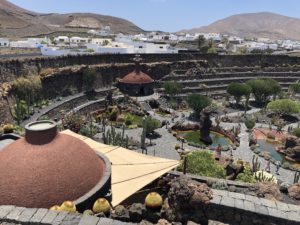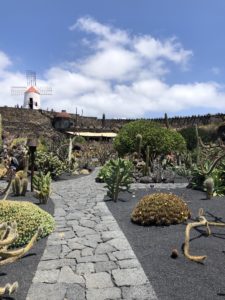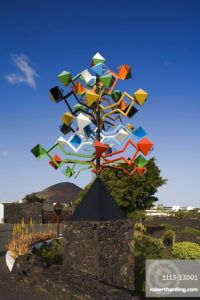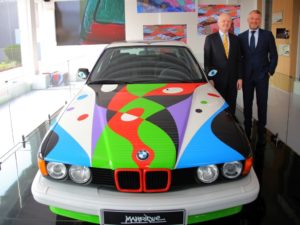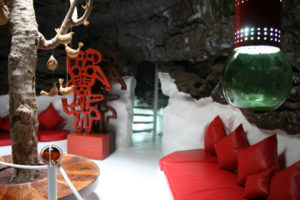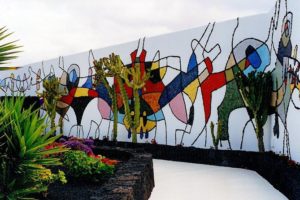César Manrique – #IconicDesign No.2
Comments Off on César Manrique – #IconicDesign No.2
Welcome to the second instalment of our #IconicDesign series.
I have always felt that a holiday is not complete without visiting a gallery or enjoying a cultural experience, unique to the place you’re visiting. With the inclement weather we’ve recently encountered, I thought I’d bring a bit of sunshine to our blog and share my discovery from our family trip to Lanzarote.
César Manrique is kinda the Godfather of this extraordinary Canary Island. His influence can be found all across this volcanic paradise. It was fascinating to visit his house and glimpse inside this amazing man’s life.
His art has a real sense of fun, mixed with the surreal and a heady dose of Picasso influence. It’s clear that his eye for design is ideal for sympathetic landscaping and architecture – examples of which can be found all over the island.
My favourite experience of his amazing creativeness was in the Jardín de Cactus. This was the last intervention work César Manrique performed in Lanzarote.
Surrounded by the largest cactus plantation of the island, dedicated to crops of cochineal insect, a product of great financial relevance to Lanzarote in the 19th Century. Jardín de Cactus has around 4,500 specimens of 450 different species, of 13 different families of cactus from the five continents.
The green shade of the plants stands out against the blue sky and the dark volcano creating a harmonious explosion of colour. The only sounds that break the peace and quiet, are singing birds and boozing insects, enjoying their very own oasis.
César Manrique (1919-1992) was born at Arrecife, Lanzarote, an island on which his art was to leave an indelible mark.
After finishing his studies at the San Fernando Fine Arts Academy at Madrid (where he lived from 1945 to 1964), he exhibited his work on a regular basis both in Spain and abroad. In the early nineteen fifties, he ventured into non-figurative art and studied the properties of matter, concerns that would predominate in his compositions, bonding him to Spain’s contemporary “informalist” movement.
Despite the artist’s abstraction and matter-centrism, the plastic roots of his pictorial production lie in Lanzarote’s volcanic landscape, transformed into a sort of non-realist naturalism which, rather than a copy of the original, is an emotional translation of its significance. “I try to be the free hand that forms geology,” he wrote.
In 1964, he moved to New York, where he held three solo exhibitions in the Catherine Viviano gallery. The direct contact with American abstract expressionism, pop art, new sculpture and kinetic art afforded Manrique a visual culture essential to his subsequent creative development.
In the mid-nineteen sixties, upon his return to his native island, he undertook a series of spatial and landscape artistic projects that were not only entirely new at the time, but constituted a statement of his plastic and ethical principles. These actions and interventions aimed to turn the landscape and the island’s natural attractions to value, with a view to generating a new international image and portrayal that would form part of Lanzarote’s adaptation to the tourist economy.
His new aesthetic ideal, called art-nature/nature-art, integrated different modes of artistic expression visible in Manrique’s landscape art. All these works are imbued with the artistic principles he held most dear: respectful dialogue between art and the natural medium and between local architectural values and modern conceits.









